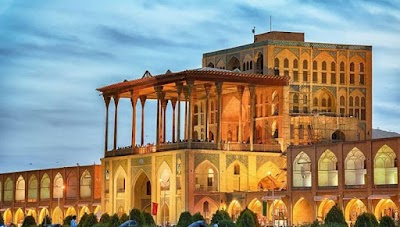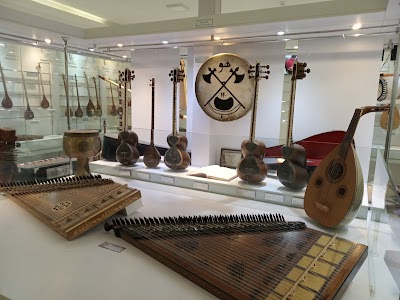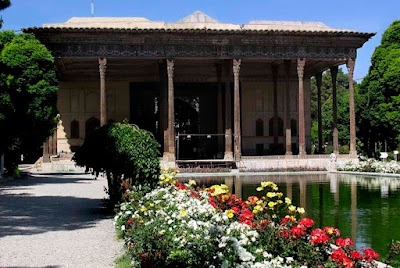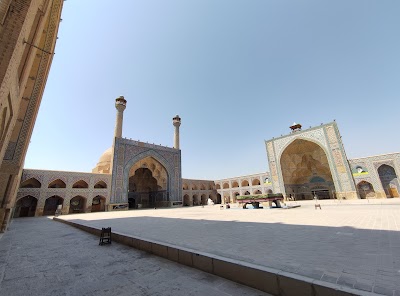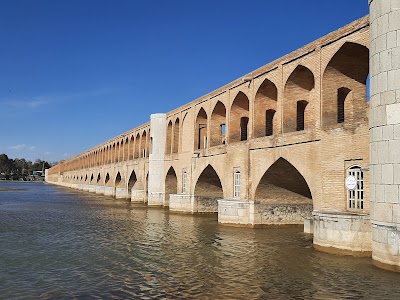Ali Qapu Palace (کاخ علی قاپو)
Overview
Introduction to Ali Qapu Palace
Nestled in the heart of Isfahan, Iran, the stunning Ali Qapu Palace is a breathtaking testament to the opulence of Persian architecture during the Safavid era. Built in the 16th century under the reign of Shah Abbas I, this magnificent palace served as the official residence and reception hall for the Shah. Its name, which translates to "The High Gate," reflects its prominent position overlooking the bustling Naqsh-e Jahan Square, one of the largest city squares in the world and a UNESCO World Heritage site.
As you approach the palace, the grandeur of its design immediately captures your attention. The structure stands at six stories high, each level adorned with intricately painted ceilings, beautiful tile work, and stunning stucco decorations that showcase the exceptional craftsmanship of Persian artisans. The combination of Persian and Islamic architectural styles creates a harmonious blend, making it a must-visit for anyone interested in history, art, or architecture.
The Architectural Marvel
Upon entering the palace, visitors are greeted by an expansive courtyard leading to the principal hall, known as the Music Room. This remarkable space is famous for its remarkable acoustics, which were ingeniously designed to enhance the sounds of music played during royal gatherings. The walls are adorned with exquisite frescoes that depict scenes of nature, music, and royal life, offering a glimpse into the lavish lifestyle of the Safavid court.
As you ascend to the upper floors, the view from the balcony provides a stunning panorama of Naqsh-e Jahan Square and the surrounding landmarks, including the iconic Shah Mosque and Sheikh Lotfollah Mosque. The architectural details, from the delicate muqarnas (ornamental vaulting) to the vibrant tile work, reflect the rich artistic heritage of Iran. This vantage point also allows you to observe the lively atmosphere of the square, filled with local vendors, tourists, and families enjoying the beautiful surroundings.
Cultural Significance
Ali Qapu Palace is not just an architectural gem; it also holds great cultural significance. It was a center for political power and artistic expression during the Safavid dynasty, and the palace hosted many important events, including royal ceremonies and diplomatic receptions. Today, it stands as a symbol of Iran’s rich history and cultural identity, attracting visitors from around the globe who seek to understand the grandeur of Persian civilization.
When visiting, travelers often find themselves immersed in the captivating stories of the palace’s past, from its role in the political intrigues of the Safavid court to the artistic innovations that flourished within its walls. Engaging with local guides can enhance this experience, as they provide insights and anecdotes that bring the history of the palace to life.
Practical Tips for Visitors
For those planning to visit Ali Qapu Palace, it is advisable to allocate sufficient time to fully explore its many levels and appreciate the artistry on display. The best times to visit are early morning or late afternoon when the lighting is perfect for photography, and the crowds are fewer. Additionally, wearing comfortable shoes is recommended, as you will be exploring multiple staircases and galleries.
Lastly, don’t forget to check the palace’s opening hours and any admission fees prior to your visit. As with many historical sites in Iran, it is also a good idea to respect local customs and dress modestly, ensuring a respectful experience in this culturally rich environment.
In conclusion, Ali Qapu Palace is a captivating blend of history, architecture, and culture, making it a highlight of any trip to Isfahan. Whether you are an architecture aficionado, a history buff, or simply a curious traveler, the palace promises an enriching experience that will deepen your appreciation for Iran’s remarkable heritage.


